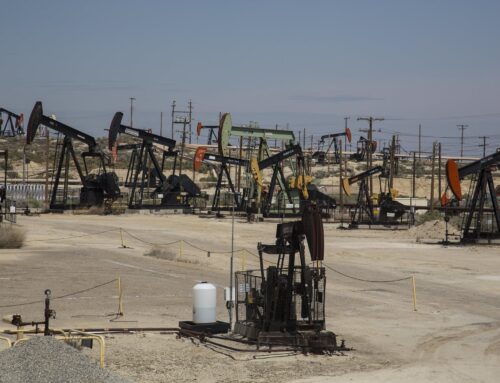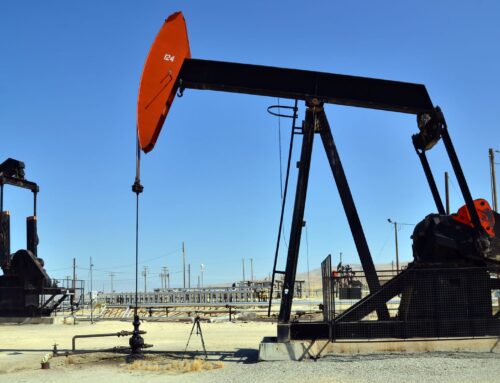(Note: an update to the report regarding the cost of the provision in question was published on June 15, 2015 – see below)
TCS Awards the Golden Fleece Award to the House and Senate Appropriations Committees – Sending Coal to Kaiserslautern
(The full report is available for download here.)
 In May 1961, a handful of lawmakers wanted to prop up a dying industry in northeast Pennsylvania. They succeeded and now, more than half a century later, the United States military is still powering its base in Kaiserslautern, Germany with coal bought and shipped from Tamaqua, Pennsylvania. It’s the last remnant of a monstrous subsidy secured by the Keystone Congressmen that at its peak required the Department of Defense to buy 500,000 tons of anthracite coal a year. The 9,000 tons that traveled 4,000 miles to Kaiserslautern last year is peanuts in comparison, but the provision that mandated the coal’s purchase and outlasted its makers is costing taxpayers $20 million* a year.
In May 1961, a handful of lawmakers wanted to prop up a dying industry in northeast Pennsylvania. They succeeded and now, more than half a century later, the United States military is still powering its base in Kaiserslautern, Germany with coal bought and shipped from Tamaqua, Pennsylvania. It’s the last remnant of a monstrous subsidy secured by the Keystone Congressmen that at its peak required the Department of Defense to buy 500,000 tons of anthracite coal a year. The 9,000 tons that traveled 4,000 miles to Kaiserslautern last year is peanuts in comparison, but the provision that mandated the coal’s purchase and outlasted its makers is costing taxpayers $20 million* a year.
Boilers, Miners, and Coal, Oh My!
After WWII, the U.S. military inherited over 10,000 boilers to heat buildings on military installations in Germany. Roughly 90 percent were fueled by German coal.[1] In that already saturated market, some Pennsylvania lawmakers saw an opportunity to bring home the bacon. By cloaking their plan in rhetoric about increasing the gross national product, helping distressed regions, and reducing unemployment, they hoped to convince the Pentagon to start buying American coal to fuel those German boilers, thereby rescuing the moribund anthracite coal industry. That it didn’t make a lick of economic or fiscal sense didn’t really matter.
Anthracite – a hard, carbon-dense, and more expensive variety of coal – is produced in the United States only in Pennsylvania, and in the decade following WWII, miners of the stuff were suffering.[2] In fact, the industry had been declining since WWI. By 1960, production and employment levels had dropped to 18 percent and 10 percent of what they had been in 1914.[3] It just couldn’t compete, but artificially propping up anthracite was politically easier than acknowledging its demise. So, representatives of the roughly eight counties of northeast Pennsylvania where Anthracite is extracted[4] decided they could create a market for their product by mandating one, at taxpayer expense.
The Keystone Congressmen
In May of 1961, five members of the Pennsylvania congressional delegation – Sens. Joseph Clark (D) and Hugh Scott (R) and Reps. Ivor Fenton (R), Daniel Flood (D), and William Scranton (R) – met with Pentagon representatives including Deputy Assistant Secretary of Defense Edward Sheridan and General J.B. Lampert, Director of Military Construction. Soon after, an engineering consultant was sent to Germany to see if there was any reason the boilers couldn’t use anthracite. Five months later, the Pentagon announced it would purchase more than 485,000 tons for its European bases. That became official in July, 1962, when the Department of Defense awarded contracts to 10 firms for 500,000 tons of eastern Pennsylvania’s finest.[5]
The Keystone quintet might’ve felt content with their work – Washington’s largest industry has always been inertia. But by the end of the decade, as the U.S. military became embroiled in Vietnam, bullets became more important than boiler fuel, and the Pentagon started planning a switch to oil-fueled furnaces to cut heating costs. They expected to save $20 million a year[6] (roughly $120 million today). The gentleman’s agreement would no longer be enough to guarantee anthracite a German market.
Flooding Europe with Pennsylvania Coal
In stepped Rep. Dan Flood, a horse-trader extraordinaire on the powerful Appropriations Committee whose penchant for parochial pork was outdone only by the greatness of his mustache. In 1972, he used his position as the second-ranking Democrat on the Defense Appropriations subcommittee to insert two riders into the fiscal year 1973 Defense spending bill.[7] Two sentences just more than 50 words combined (see left) prevented the Pentagon from touching a bolt on those German boilers to convert them away from using coal. In an interview with a reporter a few years later, Flood couldn’t help but thump his chest about thwarting the Pentagon’s plan: “Hell, yes, I stopped it. I did it by twisting arms and hammering heads. I’d break a few arms if I had to.”[8] If the Golden Fleece could be given out posthumously, he’d have won it.
Forbidden from switching to oil furnaces, the Pentagon tried to save at least a little on heating costs by converting some boilers to run on bituminous coal – a softer variety that was up to 40 percent cheaper.[9] But as Congress persisted in foisting U.S. coal on the American military installations in Germany and elsewhere in Europe, various presidential administrations started to fight back. In its FY 1980 budget, the Carter Administration requested legislative relief from the requirement.[10] It went unanswered and the military continued buying upwards of 250,000 tons of anthracite a year.[11] Stuck with coal furnaces, military brass tried to cut costs by switching to local fuel sources – Germany has never been short on coal, and it would have saved on the costs of schlepping Pennsylvania’s stuff across the Atlantic.
By then, Congressman Flood had resigned in 1980[12] after being censured for bribery[13], but Rep. Joseph McDade (R-PA) was there to continue erecting legislative roadblocks to protect Pennsylvania’s anthracite coal industry. Language was permanently added to the U.S. code that statutorily prohibited boiler conversions except in “rare and unusual cases,[14]” and a new rider was inserted into the 1983 DOD Appropriations bill that prevented the military from:
“…[purchasing] coal or coke from foreign nations for use at United States defense facilities in Europe when coal from the United States is available.”[15]
In rare accord with the Carter Administration, President Reagan requested cutting both the new provision and Flood’s original language in each of his eight budgets.[16] In the meantime, pressure was building to end the mandated boiler-fuel monopoly. Germany was pushing the U.S. to clean up its act, literally, and quit using coal, or at least install scrubbers on the coal-fired furnaces.[17] In response, the Air Force and Army tried to circumvent Congress by buying energy from the local economies, so-called “district heat.” But coal champions fought back, requiring the military to stockpile coal for German bases. In an attempt to end the impasse, the military suggested that rather than burning Pennsylvania coal abroad and angering Germany, they would buy it to burn at bases in the U.S instead.[18] The FY 1986 DOD appropriations bill gave the Pentagon $25 million to begin converting boilers on domestic bases (at an estimated total cost of $1.4 billion[19]) to burn coal – and mandated that they use no less than 1.6 million tons of coal, including at least 300,000 tons of anthracite![20]
Thankfully for taxpayers, the military never followed through, and through the efforts of Jeffrey Jones, the Pentagon Director of Energy Policy[21], among others, the language that had been reappearing in appropriations bills for 15 years was softened. In FY 1989, the measures stipulated that the Pentagon could begin converting boilers to accept other fuel, but only after DOD conducted an economic analysis of any such plans.[22] The required study was definitive; it “…resulted in the conclusion, shared by the Departments of Defense, State and Commerce, that there is no economic or burdensharing reason to favor the use of U.S. coal at Defense installations in Europe.” It stated that from 1962 to 1988, the requirement to use coal abroad had cost U.S. taxpayers more than $1.1 billion in additional heating costs[23] – equivalent to more than $2.1 billion today.
In his FY 1990 budget, President George H.W. Bush became the third consecutive president to request eliminating the legislative limitations on heating facilities at U.S. military installations in Europe[24], but the Pennsylvania delegation didn’t go down easily. In 1988, Senator John Heinz (R-PA) cast aspersions on the economic benefit of converting European heating facilities away from coal. But when the GAO report he requested came back saying that it absolutely made economic sense[25], and the subsequent DOD study came out saying the same, the program was doomed.
Doomed Isn’t the Same as Dead
The Defense Appropriations Act of 1990 became the first in 17 years to allow the Pentagon to modernize the heating furnaces they had inherited from WWII. Of course, they had to notify the Appropriations Committees of their plans ahead of time, and they still couldn’t buy European coal to fuel the furnaces that remained, but the budgetary blockade had been broken. Proving that it’s hard for Congress to take two steps forward without taking one back, however, a new subsection was added that maintained an effective prohibition against converting the coal-fired furnace at just one facility – the Army base in Kaiserslautern, Germany.[26] In the FY 1992 bill, the object of the provision became less opaque – the language was changed to plainly mandate that Kaiserslautern had to continue using U.S. anthracite coal.[27]
And there the language has stayed, tucked away and costing taxpayers, protected by budgetary obscurantism, defying the wishes of Presidents Clinton[28], Bush[29] and Obama[30] alike. The language that prevented the DOD from buying foreign coal for its existing coal-fired furnaces disappeared in 1996, and the section of U.S. code that prevented boiler conversions except in “rare and unusual cases” – which had been pretty much ignored – was amended in 1997.[31] But the last remnant of Flood’s statutory subsidy for northeast Pennsylvania coal remains.[32]
A Baby-Boomer Boondoggle
Every year, around 9,000 tons of anthracite coal is mined from the hills of Tamaqua, Pennsylvania, loaded onto rail cars and shipped from an East coast port, usually Baltimore, to Rotterdam in the Netherlands. From there it travels by barge, railcar, or truck to storage locations in Germany. As far as we can tell, the costs of shipping that coal have never been disclosed, but we know that the Air Force just extended the contract with the utility in Kaiserslautern in December, 2013 to provide anthracite-fueled heat to the U.S. base there for another six years, at $20 million* a year.[33] That’s not much for the Pentagon, but after 54 years of subsidizing anthracite, the provision that requires the Kaiserslautern contract stands as a testament to government inertia and Congress’ utter inability to cut waste.
All five of the Keystone Congressmen who created the carve-out for anthracite – and most of its supporters, like Sen. Heinz and Jack Murtha (D) – have passed away, and the Congressional tenures of its outspoken defenders – Reps. Joseph McDade and Tim Holden (D)[34] – have ended. Yet the boondoggle, a baby-boomer by age, has continued. And for perpetuating this ridiculous requirement to ship Coal to Kaiserslautern, the House and Senate Appropriations Committees receive the Taxpayers for Common Sense Golden Fleece Award.
*See the update published below
About the Golden Fleece
The Golden Fleece award was created in 1975 by the late Senator William Proxmire. It is intended to highlight instances of wasteful spending. After retirement, Sen. Proxmire served as Honorary Chairman of Taxpayers for Common Sense’s Advisory Board and passed the mantle of the Golden Fleece to the organization in 2000.
For more information, contact Taxpayers for Common Sense at 202-546-8500
Lobbyists fighting to resurrect the recently defeated, decades-old requirement that one military installation in Germany be heated with anthracite coal (from Pennsylvania) have contacted Taxpayers for Common Sense. They argue the coal provision accounts for only $1.5 million of the $20 million cost estimate we cited in this report (from a National Public Radio story last year). They have not provided documentation, despite multiple requests. Nonetheless, whether it costs $20 million, $1.5 million, or $1.50, the program is wasteful – and that’s what earned it the Golden Fleece.
References
[1] General Accounting Office (GAO). NSIAD-90-96. “Military Installations: Coal Inventory and Consumption in the Federal Republic of Germany.” February 1990. http://www.dtic.mil/dtic/tr/fulltext/u2/a282617.pdf
[2] U.S. Department of Labor. Mine Safety and Health Administration. “History of Anthracite Coal Mining.” http://www.msha.gov/District/Dist_01/History/history.htm
[3] Pennsylvania Department of Environmental Resources. “Annual Report 1970: Anthracite, Bituminous Coal and Oil and Gas Divisions.” 1970. Page 41-42. https://archive.org/stream/anthracite71penn#page/40/mode/2up
[4] Pennsylvania Department of Conservation and Natural Resources. “Coal in Pennsylvania.” 2002. Page 14-15. http://www.dcnr.state.pa.us/cs/groups/public/documents/document/dcnr_014594.pdf; U.S. Energy Information Administration. “Number of mines for all coal, total, Pennsylvania, all mine statuses.” 2013. http://www.eia.gov/beta/coal/data/browser/#/topic/38?agg=1,0&rank=g&mntp=g&geo=0001&freq=A&datecode=2013&rtype=s&start=2008&end=2013&ctype=linechart<ype=pin&maptype=0&rse=0&pin=
[5] Higgs, Robert. The Independent Institute. “Hard Coal Make Bad Law: Congressional Parochialism Versus National Defense.” March 1, 1988. http://www.independent.org/publications/article.asp?id=110
[6] Crile, George. “The Best Congressman.” Harper’s Magazine. January 1975. Page 63.
[7] Defense Appropriations Act, 1973. P.L. 92-570, Secs. 720, 743; 86 Stat.1184, October 6 1972, at 1200, 1203. http://www.gpo.gov/fdsys/pkg/STATUTE-86/pdf/STATUTE-86-Pg1184.pdf
[8] Ibid, note 6.
[9] Ibid, note 1, page 6.
[10] Government Printing Office. “The Budget of the United States Government.” Fiscal Year 1980. Appendix – Detailed Budget Estimate for Department of Defense-Military. Page 343-344. http://digitalcollections.library.cmu.edu/awweb/awarchive?type=file&item=431042; alternatively at: https://fraser.stlouisfed.org/scribd/?item_id=5734&filepath=/docs/publications/usbapp/bus_app_1980.pdf&start_page=269#scribd-open
[11] GAO. NSIAD-87-172. “Military Facilities: Conversion to District Heat in Germany.” August, 1987. Page 22. http://gao.gov/assets/210/209592.pdf
[12] Associated Press. “Rep. Flood to Quit Congress on Jan. 31.” November 7, 1979. http://query.nytimes.com/gst/abstract.html?res=9800E4D91738E732A2575BC0A9679D946890D6CF
[13] U.S House of Representatives, Committee on Standards of Official Conduct. “In the Matter of Representative Daniel J. Flood.” March 26, 1980. http://ethics.house.gov/sites/ethics.house.gov/files/Hrpt96-856.pdf
[14] 10 U.S.C. 2922. Created in the Military Construction Codification Act. P.L. 97-214, Sec. 6; 96 Stat. 172, July 12, 1982. http://www.gpo.gov/fdsys/pkg/STATUTE-96/pdf/STATUTE-96-Pg153.pdf
[15] Defense Appropriations Act, 1983. P.L. 97-377, Sec. 778; 96 Stat. 1833, December 21 1982, at 1863. http://www.gpo.gov/fdsys/pkg/STATUTE-96/pdf/STATUTE-96-Pg1830.pdf
[16] For example: “The Budget of the United States Government.” Fiscal Year 1984. Appendix – Detailed Budget Estimate for Department of Defense-Military. Page I-G67 to I-G68. https://fraser.stlouisfed.org/scribd/?item_id=5737&filepath=/docs/publications/usbapp/bus_app_1984.pdf&start_page=309#scribd-open
[17] The New York Times. “The Seamy Side of Congress.” April 11, 1988. http://www.nytimes.com/1988/04/11/opinion/the-seamy-side-of-congress.html
[18] Gruson, Lindsey. The New York Times. “Pentagon Is Seeking to Halt Coal Shipments to Germany.” June 8, 1986. http://www.nytimes.com/1986/06/08/us/pentagon-is-seeking-to-halt-coal-shipments-to-germany.html
[19] Ibid, note 18.
[20] Defense Appropriations Act, 1986. P.L. 99-190, Sec. 8110; 99 Stat. 1185, Dec. 19, 1985.
[21] Ebberts, Lynette. Department of Defense Energy Support Center. “30 Years of Federal Service: ‘Not Part of the Plan.’” Fuel Line. Winter 2004. Volume 1. Pages 4-6. http://www.energy.dla.mil/library/magazines/Documents/Fuel%20Line%202005%20and%20earlier/2004%20V1.pdf
[22] Defense Appropriations Act, 1989. P.L. 100-463, Sec. 8090; 102 Stat. 2270-32, Oct. 1, 1988. http://www.gpo.gov/fdsys/pkg/STATUTE-102/pdf/STATUTE-102-Pg2270.pdf
[23] U.S. Departments of Defense, State, and Commerce. “Study of the Economic Consequences of Using U.S. Coal at Defense Installations in Europe.” June 1989. http://digitalcollections.library.cmu.edu/awweb/awarchive?type=file&item=428828
[24] Government Printing Office. “The Budget of the United States Government.” Fiscal Year 1990. Appendix – Detailed Budget Estimate for Department of Defense-Military. Page I-G59 to I-G60. https://fraser.stlouisfed.org/scribd/?item_id=5744&filepath=/docs/publications/usbapp/bus_app_1990.pdf&start_page=321#scribd-open
[25] Ibid, note 1.
[26] Defense Appropriations Act, 1990. P.L. 101-165, Sec. 9013; 103 Stat. 112, November 21 1989, at 1132. http://www.gpo.gov/fdsys/pkg/STATUTE-103/pdf/STATUTE-103-Pg1112.pdf
[27] Defense Appropriations Act, 1992. P.L. 102-172, Sec. 8008(c). http://www.gpo.gov/fdsys/pkg/STATUTE-105/pdf/STATUTE-105-Pg1150.pdf
[28] For example: “Budget of the United States Government.” Fiscal year 1996. Appendix – Detailed Budget Estimate for Department of Defense-Military. Page 356. Proposed deletion of Sec. 8007. http://www.gpo.gov/fdsys/pkg/BUDGET-1996-APP/pdf/BUDGET-1996-APP-2-9.pdf
[29] For example: “Budget of the United States Government.” Fiscal year 2006. Appendix – Detailed Budget Estimate for Department of Defense-Military. Page 333. Proposed deletion of Sec. 8072. http://www.gpo.gov/fdsys/pkg/BUDGET-2006-APP/pdf/BUDGET-2006-APP-1-7.pdf
[30] For example: “Budget of the United States Government.” Fiscal year 2016. Appendix – Detailed Budget Estimate for Department of Defense-Military. Page 309. Proposed deletion of Sec. 8055. https://www.whitehouse.gov/sites/default/files/omb/budget/fy2016/assets/mil.pdf
[31] National Defense Authorization Act for Fiscal Year 1998. P.L. 105-85, Sec. 1041; 111 STAT. 1885, November 18 1997, http://www.gpo.gov/fdsys/pkg/PLAW-105publ85/pdf/PLAW-105publ85.pdf
[32] Consolidated and Further Continuing Appropriations Act, 2015. P.L. 113-235, Div. C, Title VIII, Sec. 8055. https://www.congress.gov/113/plaws/publ235/PLAW-113publ235.pdf
[33]Dáte, S.V. National Public Radio. “Why Are We Hauling Pennsylvania Coal All The Way To Germany?” March 22, 2014. http://www.npr.org/sections/itsallpolitics/2014/03/14/290238727/long-dead-congressmans-earmark-lives-on-in-europe
[34] Power, Stephen. The Wall Street Journal. “Spending Bill Includes Gift for Pennsylvania’s Coal Country.” April 15, 2011. http://blogs.wsj.com/washwire/2011/04/15/spending-bill-includes-gift-for-pennsylvanias-coal-country/










